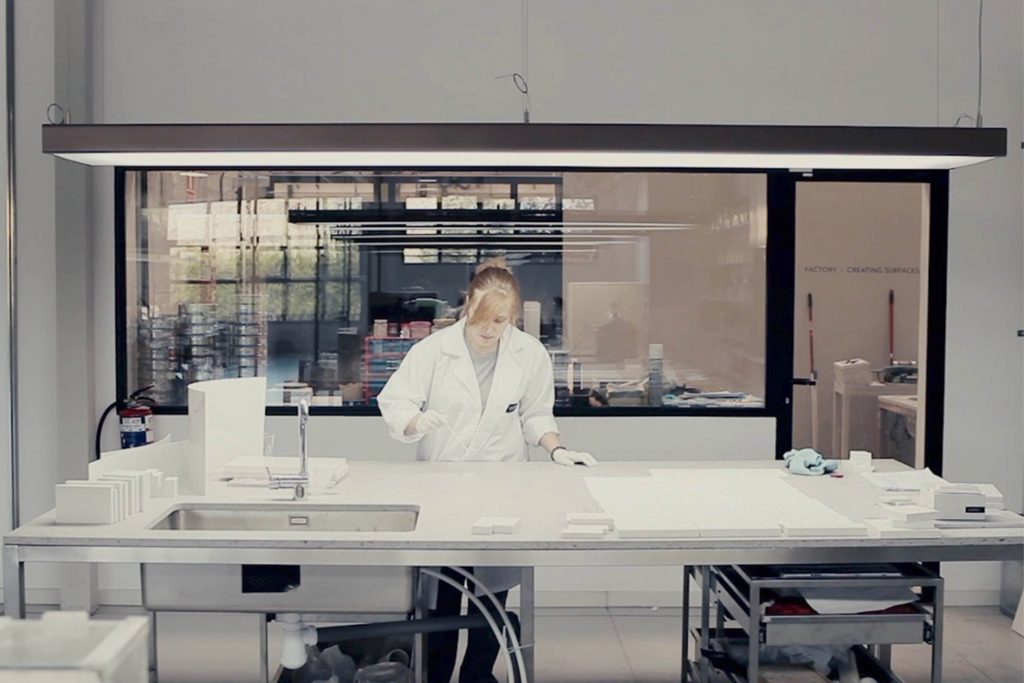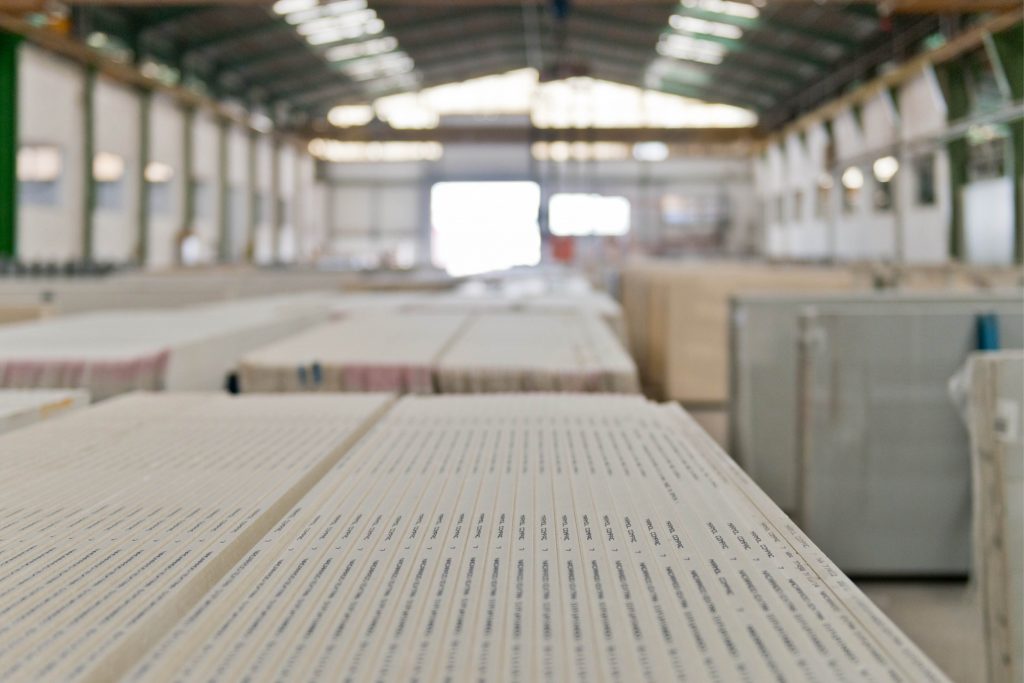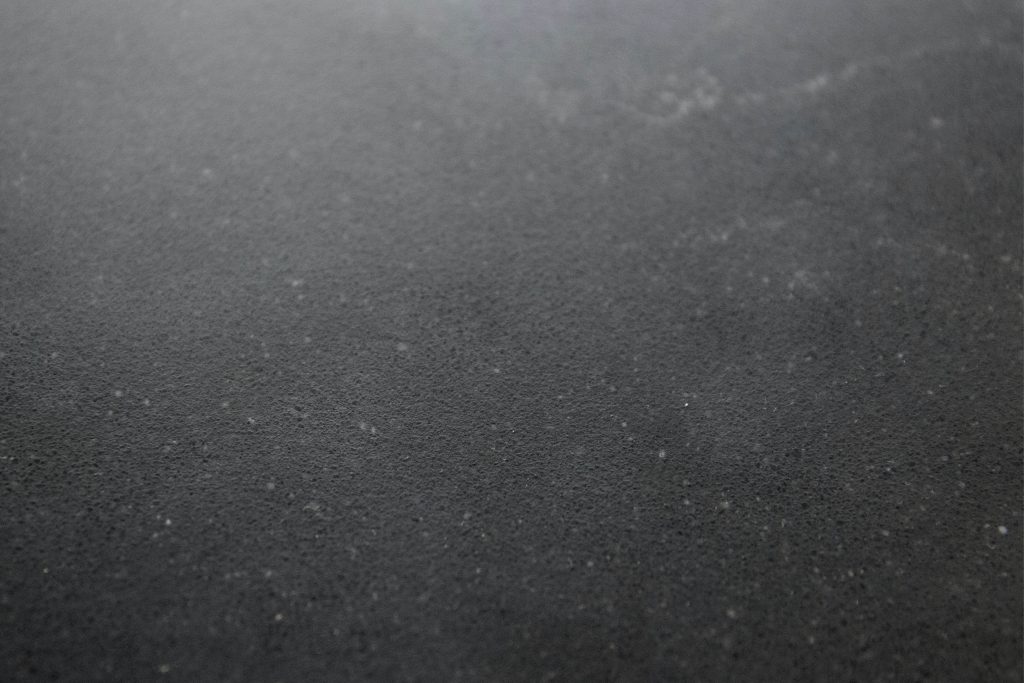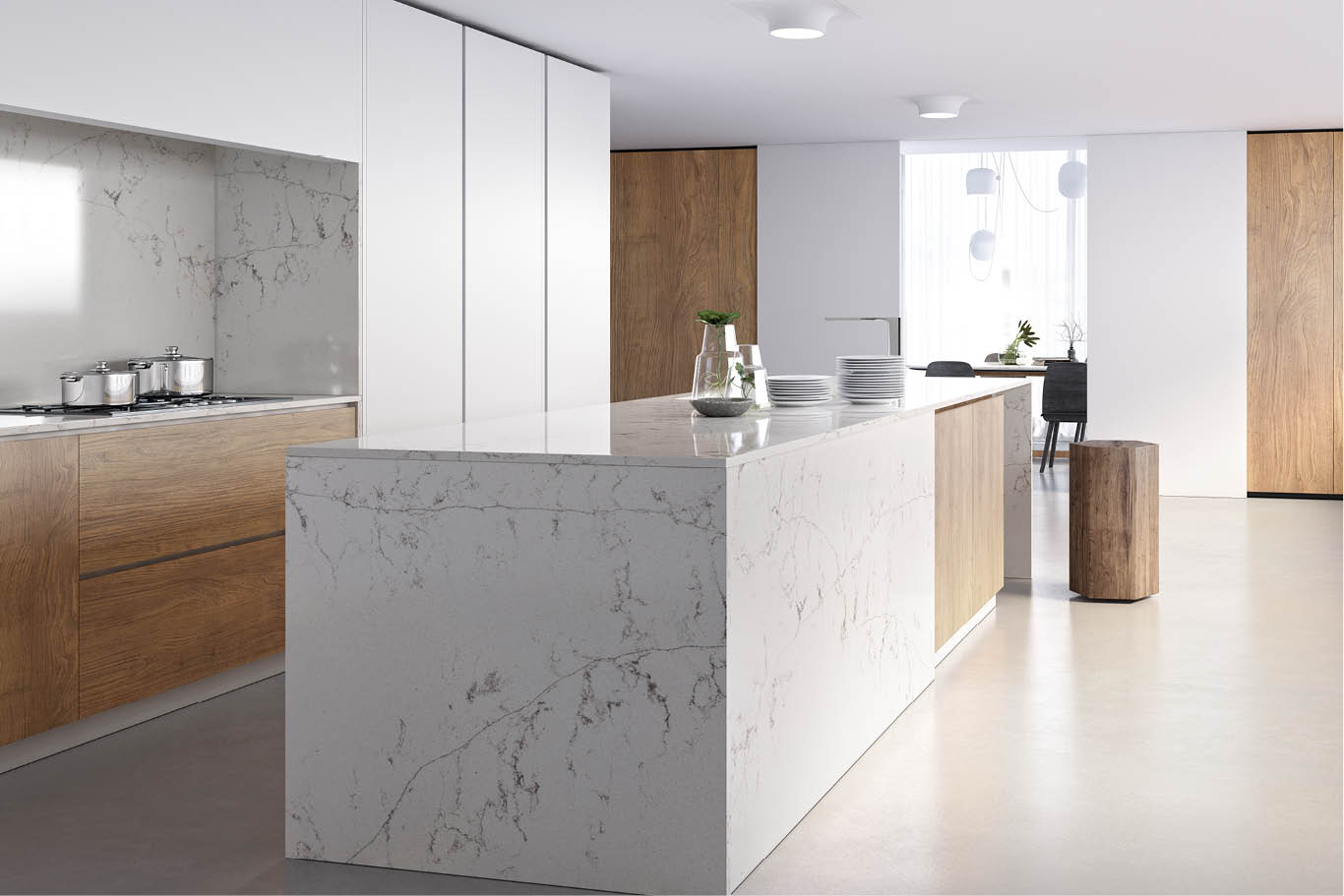
How do we innovate in surface design? New technologies and experience in applying and using certain products in interior design and architecture enable us to seek out new pathways. Let us take at look at two examples or developments.
First, sustainability in design and architecture is one of today’s sweeping trends. Companies and professionals are ever more aware of the need to adhere to sustainable production processes. And now more than ever, clients and designers demand environmentally-friendly solutions. One example in surfaces is the creation of bioresins as a binding agent for quartz panels. Compac’s R&D&i team worked on the design of a plant-based resin for its Unique Collection™ to avoid using oil-based products such as acrylics.

The second innovation path for surface design could well be finishes for materials. The features of worktop finishes can stand out for their design, on the one hand, and for their technical sensations and solutions on the other. There are matt and gloss kitchen worktop surfaces on the professional market—this is the norm. And after months of research and years of heeding experience and feedback from both professionals and clients, COMPAC has innovated in the field by creating a new type of finish known as Crêpe offering a near-matt finish with light reflections. Moreover, marks and smears—like those from finger smudges—are less visible on this surface with its slightly roughened yet silky feel.

COMPAC has innovated in the field by creating a new type of finish known as Crêpe

